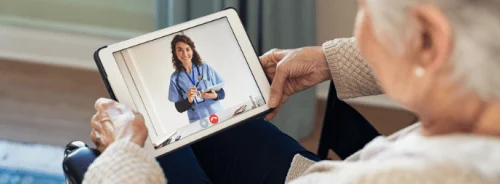HealthManagement, Volume 21 - Issue 3, 2021
Key Points
- Health Equity is defined as the absence of avoidable, unfair, or remediable differences among groups of people.
- Current imaging policies and practices contribute to health inequity and offer pathways to reduce disparities.
- Some examples include lack of access to the latest equipment or the best-trained staff, bias in the rate at which imaging is offered to certain patients, and inappropriate overuse of resources by more privileged groups.
- It is important that the algorithms used to make care and treatment decisions are not exacerbating bias.
- It is also important to address the underrepresentation of minorities among diagnostic radiology physicians and the need for a more diverse radiology workforce.

The World Health Organization (WHO) defines “Health Equity” as the absence of avoidable, unfair, or remediable differences among groups of people, whether those groups are defined socially, economically, demographically or geographically or by other means of stratification. There are clearly differences in the nature of the opportunities to advance health equity depending on one’s location, but even in highly sophisticated economies such as the U.S., there are obvious gaps that are often tied to issues of social justice and structural racism. In my own specialty, radiology, we may traditionally have deferred to our primary care and public health colleagues on the topic of health equity, but increasingly we are identifying unique opportunities to improve outcomes for the patients we serve.
The disparities in outcomes related to the COVID-19 pandemic, with Black and Hispanic patients in the U.S. dying at a rate 2-3 times their white counterparts, created a sense of urgency around improving access to care and mitigating the impact of social determinants of health. The engagement of healthcare professionals in protests surrounding the death of George Floyd and in the Black Lives Matter movement as well as, more recently, in activism against anti-Asian racism and violence indicates that as a community, we are committed to a more equitable future.
As scientists, we instinctively seek data to understand a problem. A landmark article in Radiology by Waite et al. (2021) outlines the ways in which current imaging policies and practices contribute to health inequity and offer pathways to reduce disparities. The authors point out that lack of access to the latest equipment or the best-trained staff, bias in the rate at which imaging is offered to certain patients often based on “outdated suspect racial science,” and inappropriate overuse of resources by more privileged groups can all negatively impact outcomes for many Black and other minoritised patients.
Waite et al. (2021) propose a set of solutions including outreach to and education for local communities as well as efforts to reduce barriers to care such as lack of transportation, reduced cost-sharing and price transparency as well as cultural competency training for staff. They highlight the importance of ensuring that the algorithms we use to make care and treatment decisions are not exacerbating bias. Lastly, they point to the “stark underrepresentation of minorities among diagnostic radiology physicians” and the need for a more diverse radiology workforce as well as the important role that radiologists can play in advocating for both uptake of preventive screening as well as in reducing the inappropriate use of imaging.
Lack of access to imaging is even more pronounced in other areas of the world, but the “business case” for investment in imaging is clear even in the most resource-constrained economies. In a recent Lancet Commission led by Hricak et al. (2021), we demonstrated a net return of $179.19 per $1 invested in scaling up imaging infrastructure in Low and Middle Income Countries (LMICs).
The American College of Radiology, in collaboration with other professional radiology societies both in the U.S. and worldwide, is building a Health Equity Coalition that will seek to galvanise our community around addressing barriers to high-value imaging care (https://www.acr.org/Practice-Management-Quality-Informatics/Health-Equity). Collaboration outside of radiology will be critical to the success of this effort, and we will build on existing relationships with other professional bodies such as the American Medical Association as well as philanthropic organisations such as RAD-AID International.
Creating community and coalition are important first steps, but storytelling is also a powerful tool to shift culture. The ACR has collected compelling stories of radiologists who are innovation agents to create role models for change (https://www.acr.org/Practice-Management-Quality-Informatics/Imaging-3/Case-Studies/Patient-Engagement/When-the-Radiologist-Becomes-the-Patient). Incentives must be appropriately aligned with payment models that support equitable care. Payment models where radiologists are only rewarded for per unit productivity without regard to quality and fragmented healthcare delivery and financing system with wide variation in quality are all barriers to the level of care we know we should offer all our patients. Radiologists must be leaders in advocating for a payment methodology that prevents burnout and the associated loss of empathy so that we are able to advocate on behalf of our patients.
As one of my mentees said recently, when asked why A.I. would not replace radiologists: “I know my patients will want to know there is a human radiologist involved in their care.” Just as important is that we as radiologists know that there is a patient and a lived experience that underpin the images we interpret. Our view of the world cannot stop at the reading room door.
Conflict of Interest
None.
References:
Hricak H, Abdel-Wahab M, Atun R et al. (2021) Medical imaging and nuclear medicine: a Lancet Oncology Commission. Lancet Oncol.,22(4):e136-e172. doi: 10.1016/S1470-2045(20)30751-8.
Waite S, Scott J, Colombo D (2021) Narrowing the Gap: Imaging Disparities in Radiology. Radiology, 299(1):27-35. doi: 10.1148/radiol.2021203742.







